SOURCE







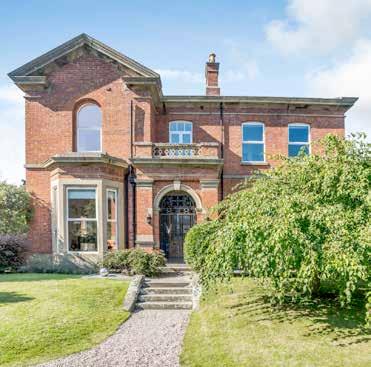













The former Chancellor’s mini-budget had a significant effect on borrowing costs which, in turn, inevitably impacted the property market. For most of 2022 the market had been defying wider economic pressures, particularly in the areas in which we operate. The changes to Stamp Duty announced as part of the mini budget (see page 45) may or may not have provided some additional stimulus, however, initially at least, the rise in borrowing costs neutralised its potential.
It is clear now that the dramatic relaxation of fiscal policy owed more to an idealistic view of economic principle than a practical intervention which would reliably boost our economy. The requirement for extensive borrowing was clear, but the pay-back mechanism was not revealed. The consequential panic in the financial markets was clearly an unintended consequence.

Where mortgage borrowing costs had been steadily increasing, suddenly they shot up.
As the situation spiralled, the Chancellor was dismissed and Jeremy Hunt stepped in to provide much needed confidence in the Government’s commitment to fiscal discipline.
It’s generally accepted that mortgage borrowing is firmly linked to base rates, with borrowing costs fluctuating as the base rate is adjusted. However, the mini-budget has exposed the very strong link between the Government’s borrowing costs and mortgages.

If the Government’s borrowing costs increase, the costs of new mortgages also increases. The cost of lending is linked to the amount of risk associated with the loan and we are used to our Government being seen as an incredibly reliable borrower, so lending costs have been low for a sustained period of time. The minibudget dented the markets’ confidence in the Government. As a guide, at the start of 2022, the average two-year fixed rate deal for new borrowers was under 2.5%. Just before the mini-budget it was around 4.75% and then we saw new borrowers being presented with a rates in excess of 6%.
Where the announcement created considerable caution in the property market, a pause if you like, Jeremy Hunt’s announcement has made significant inroads into calming the volatility and restoring confidence. Mortgage rates will now become more favourable. This, together with the changes to Stamp Duty underpinned by the undimmed passion and commitment to move to more rural climes is likely to continue to drive market activity. Buyer sentiment has been very positive with over 70% of buyers confident that they will find a house this autumn and this figure is consistent with most of 2022. Due to a shortage of property and a positive attitude towards moving, prices, in our market sector, have simply plateaued rather than fallen. We have to assume however that prices will begin to adjust if lending rates ease up, as we move into 2023.
If you are looking for your perfect home or if it’s time to sell, we are ready, willing and able to help. We specialise in the sale of the kind of houses that are still in high demand in areas that people are very keen to move to. There is a select collection of lovely properties for you to browse through in this magazine, but please do visit our website for more.
Our team, and their contact details are on page 4. We would be very pleased to hear from you and to offer you any advice or help that we can. Let’s find the one.
“...the undimmed passion and commitment to move to more rural climes is likely to continue to drive market activity”
Alasdair Dunne
Head of Residential Sector alasdair.dunne@fishergerman.co.uk
Ben Longstaff
Joy Brankin-Frisby
07917 064657
Derbyshire, Leicestershire, Staffordshire ben.longstaff@fishergerman.co.uk
Christian Sanders
Worcestershire, Herefordshire christian.sanders@fishergerman.co.uk
07799 697791
Derbyshire, Leicestershire and Staffordshire
07977 066741
emily.mcpheat@fishergerman.co.uk
Daniel Hayhurst
Cheshire and South Manchester
07810 378187
Ella Pearson
New Homes Agency ella.pearson@fishergerman.co.uk




07580 323827
677574
Leicestershire, Rutland joy.brankin-frisby@fishergerman.co.uk
Molly Dickson
Bedfordshire, Cambridgeshire
264143
Matthew Davis
Oxfordshire, Buckinghamshire matthew.davis@fishergerman.co.uk
385037
Toby Harris Oxfordshire, Northamptonshire toby.harris@fishergerman.co.uk
Richard Gadd National Country Agency Team
481487
07870 961711
Michael Harris Cheshire and North Wales michael.harris@fishergerman.co.uk






Tom Parker
Nottinghamshire, Lincolnshire, Yorkshire
07738 981255
thomas.parker@fishergerman.co.uk
Tom Dennes
Oxfordshire, Warwickshire
07587 033061
tom.dennes@fishergerman.co.uk
Thomas Blake
Derbyshire, Leicestershire and Staffordshire
07917 220967
thomas.blake@fishergerman.co.uk
Matthew Allen National Country Agency Team matthew.allen@fishergerman.co.uk




07810 378190


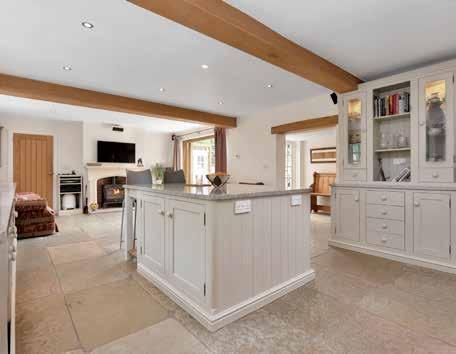


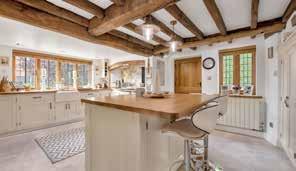

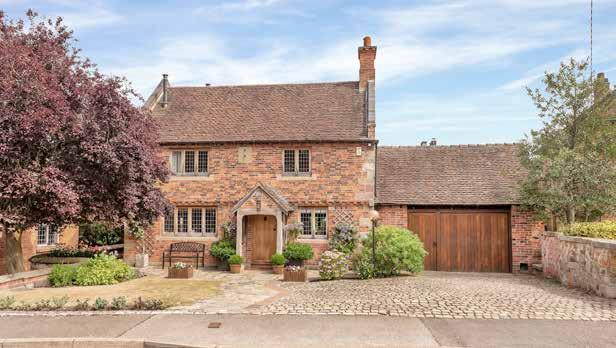


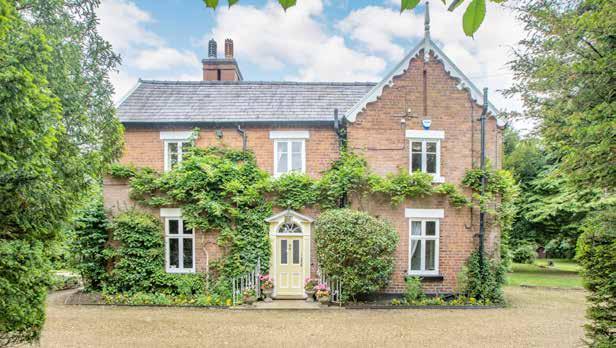
Increasing energy prices and rising awareness of the environment and climate change are having a significant impact on the way we think about heating and powering our homes. The solution must lie in the use of environmentally sustainable systems, but the pathway to change is far from clear.
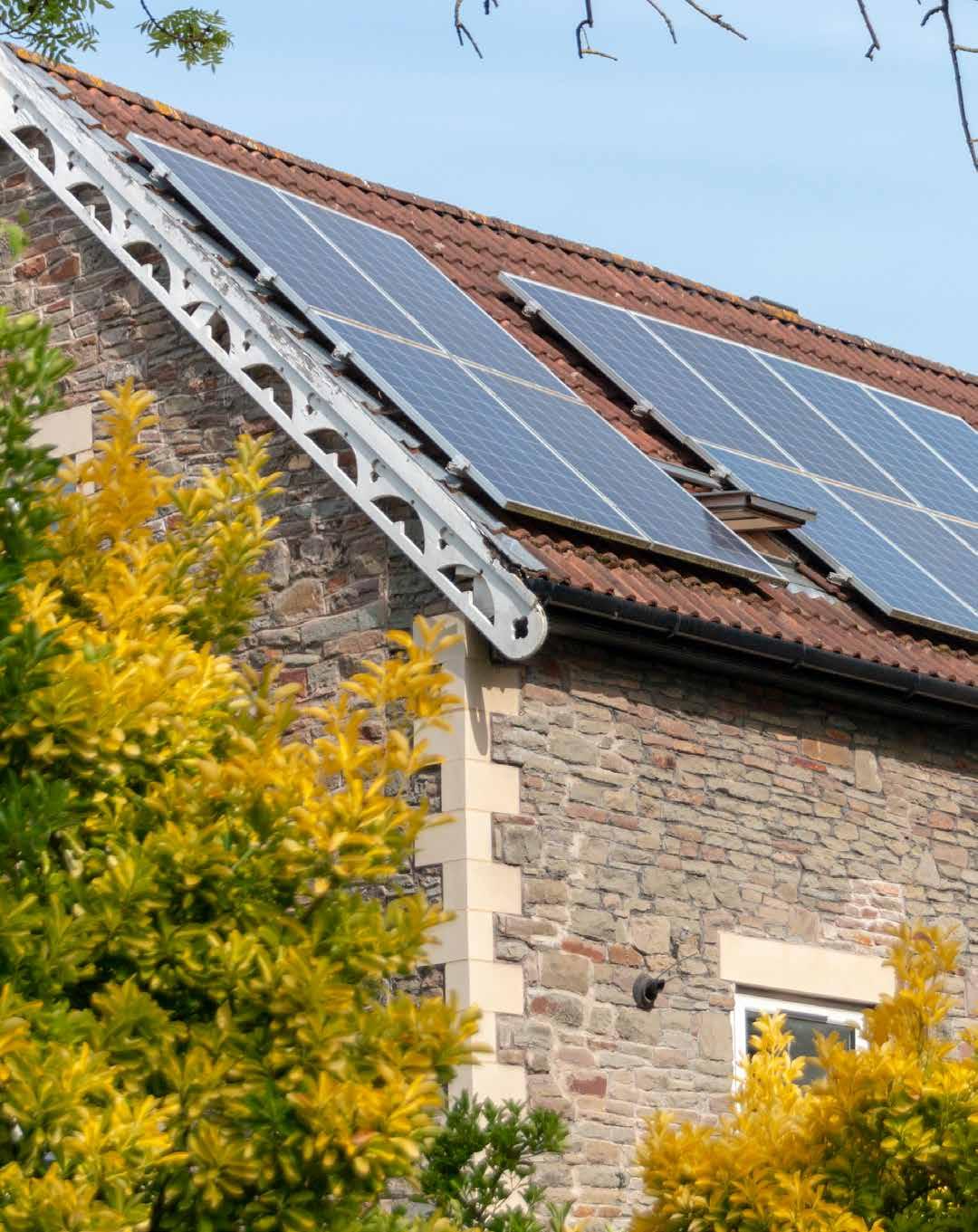
The prominence of COP26 last year helped to focus our collective conscience on our environment and steps that would need to be taken to move us towards net zero over the coming years. The conference confirmed that climate change is one of the most pressing problems we face, and that action is urgently required. Whilst governments across the world were encouraged to make pledges to reverse the worst of climate change, the average person perhaps began to think a little more about the steps that they could take to reduce their personal impact on the environment. Modes of transport seem to be an area where we can do a great deal with relative ease, but what to do about our homes feels more complicated.
There is a plethora of heating options available to us but selecting the right option for you and your home will undoubtedly be challenging. The most sustainable heating solutions are generally considered to be geothermal options which extract heat from beneath the Earth, using a small amount of electricity to pump fluid through underground pipes to absorb natural heat and then above ground use the natural heat to warm buildings. Critically, they generate more energy than they consume. Air source heating is based on a similar idea, and of course unlike traditional boilers, they don’t run on fossil fuels.
If a geothermal or heat pump system is a consideration for you then advice must be taken, and we would recommend that you speak to three installers to ensure you are best placed to make the right decision.
To power your homes, wind turbines and solar power are generally considered the most environmentally friendly. There are of course options to buy energy generated in an environmentally sustainable way, but if you are focused on generating your own energy then solar photovoltaics and battery storage could be a consideration. Low-cost energy generation might be particularly handy when you are considering the purchase of an electric car.
Improved insulation is also very important. Ideally you can keep the cold out and the warmth in, and the holy grail is achieving a home that is easy to heat in winter and cool in summer. It is difficult to implement efficiency improvements piecemeal and expensive to make the changes in one hit, so forward planning and strategic investment that is tied in with key trigger points (such as moving home or renovating) can pay dividends. Better windows with double or triple glazing are great if possible but if not, then investing in the careful maintenance of traditional windows is well worthwhile and you may be able to incorporate secondary glazing.
If you’re familiar with home energy performance certificates, the latest target by the early 2030s is that all homes will have reached a minimum efficiency of grade C where feasible; a tall order for some. As you start to consider sustainable power and heat options, it’s worth knowing that most people are increasingly aware of their environmental footprint and increasingly determined to take steps to reducing it. Most will now acknowledge that there is significant added value in homes where steps have already been taken to move towards sustainable heating and power both in terms of monetary value but also in a clearer conscience.

15 years ago, we were starting to see houses where the owners had invested in environmental solutions for heating and energy generation. At that stage, however, most people failed to attribute any value to the systems. Most people preferred the familiarity of their gas supply or the oil tank to heat their homes.
By the end of 2022, we are on track to have over 30 million homes in the UK. As we highlight on page 32, house builders are now regulated to construct properties that will have a much lower impact on our environment than the majority of our current homes. All very well if you are the owner of one of those homes, but if not then you might want to consider the steps that could be taken to make a home more sustainable.


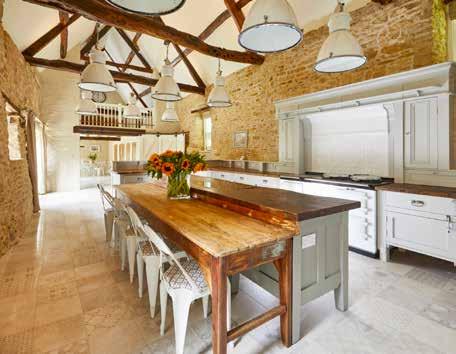

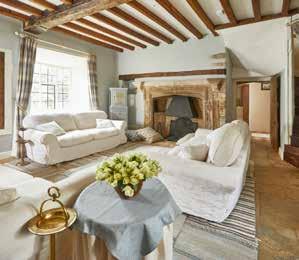
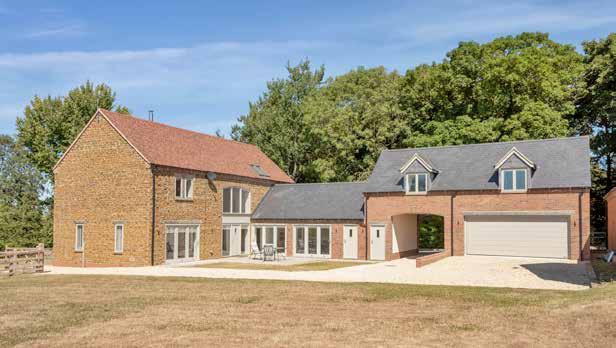




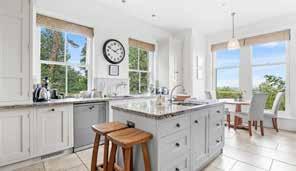
I am a relatively recent new user of eBay – I know, it’s been around for ages, what on earth have I been doing? It wasn’t until we decided to start getting rid of things we no longer needed at home, prompted by the family growing up and starting to flee the nest, that we made our first tentative steps onto the eBay platform. I love it! When we have something listed for sale, it’s great seeing the page views increasing, responding to questions and then following the bids until the auction ends. And, above all, we’ve been really pleased with the prices we’ve been achieving.
As this is an article about online property auctions, you won’t be surprised that I can draw parallels with eBay. Fisher German have a long track record of selling property, land and farm machinery by traditional auction. However we have, for some time now, been accelerating our use of the online auction method as a virtual replacement for physical auctions. We can see page views, respond to queries, and can monitor the number of buyers who have registered
their interest, inspected the legal pack and got themselves in a position to bid. All this allows us to report back to our clients with first-rate data on the likelihood of their property selling well on the day, something which was always rather hit and miss with physical auctions – especially if it was a miserable, rainy day! We regularly achieve exceptional results for our clients through competitive bidding, on average 23% over the guide price but with some astonishing results in recent months.
One recent sale which eclipsed all expectations was a former village school near Chesterfield – this one certainly kept my colleagues in Ashby tied up! It attracted 9,203 page views, 135 registered buyers and, after 85 bids, the timer went to zero at £388,000, an incredible £208,000 over the guide price of £180,000. This might be an extreme example, but it shows what can be achieved when buyers are bidding against each other and eager to secure a property.
Online auctions are not just for residential

“We regularly achieve exceptional results for our clients through competitive bidding, on average 23 % over the guide price”
sales; they can work equally successfully for commercial lots, development land, redundant buildings or parcels of land. Our Chester office listed a very attractive block of land with achingly pretty views over the Welsh countryside and beyond to the coast – at 7.33 acres, the guide price of £50,000 seemed attractive.. and so it proved. Buyers from nearby and further afield had a tussle to secure it with the final price reaching £85,000, that’s a whopping 70% over guide.
And for the buyer, what’s in it for you? Well, you can do all your research by studying the legal pack in the online data room and when it comes to bidding, you can do so from the comfort of your own home sitting around the laptop with other family members and watch the bids being submitted on screen. Whenever a bid is placed in the last five minutes, the timer is reset for another five minutes allowing you plenty of time to discuss your next bid with those around you. When you’re waiting to see if you’ve got it, five minutes can feel like an age! But if you are the successful buyer, when the timer goes to zero, that’s the exchange of contracts. This offers more security than the more common private treaty sale, where getting to exchange of contracts can sometimes be quite a long and fraught process, taking typically three to four months.
We are confident that selling by online auction is a great way forward for many clients. A property doesn’t need to be falling down or condemned to qualify. Give us a call and we can talk about what you’ve got to sell and how the online auction process can work for you. While we don’t pretend that this will be the new eBay, we can see significant growth in this method of sale – be part of the success story!
Doncaster, South Yorkshire
An exciting opportunity to purchase 5.36 acres of amenity woodland

£
Pentywyn Road, Llandudno
A rare opportunity to purchase a parcel of grazing land, suitable for grazing or equestrian use

Stainsby, Heath, Chesterfield
A former village school, offering great potential situated on the edge of the village with rural views
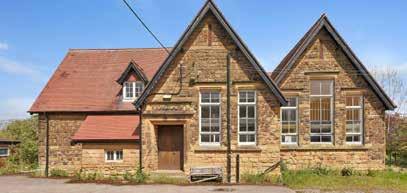
If you are interested in finding out more about selling by online auction, please contact Tom Dennes on 07587 033061 or tom.dennes@fishergerman.co.uk



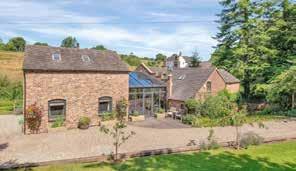



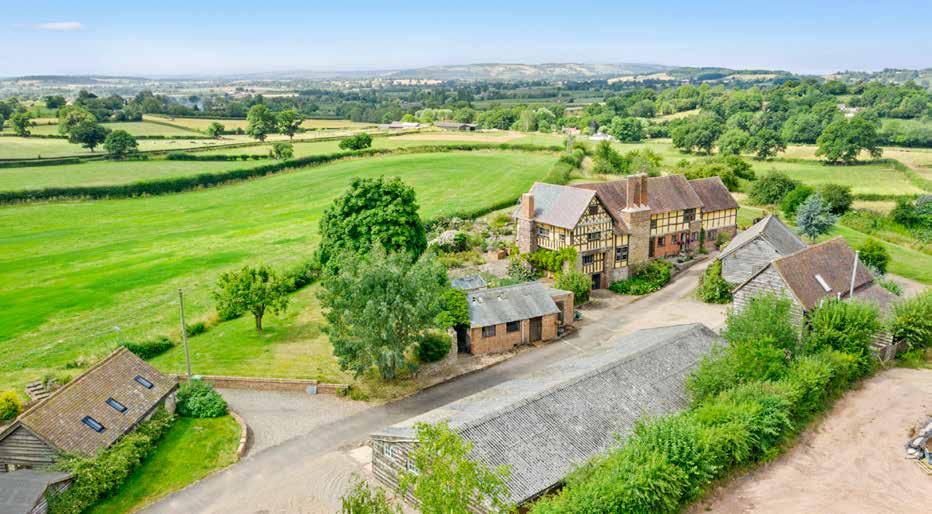
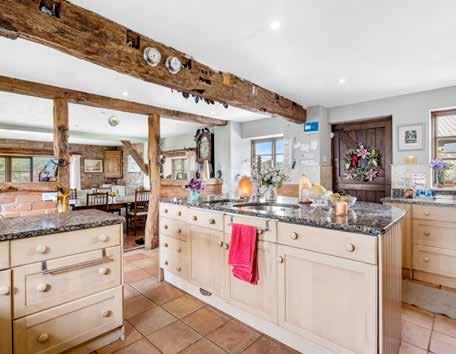
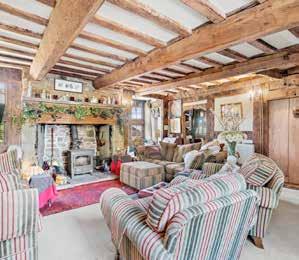
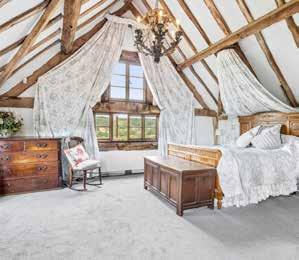
our National Country Agency Team. Specialising in the sale of complex and higher value property, the National Country Agency Team can provide additional market insight, technical expertise and guidance to chart a clear path through the myriad and often complex factors that could be influential in a sale. The team are focused on unlocking additional value by formulating, and then implementing, the best strategy to create the highest possible sale price for country houses, farms and estates.

Local and regional buyers are the largest group of potential purchasers for most properties and our regional offices will cover this group comprehensively. However, where properties are unique and in short supply, experience demonstrates that buyers often have much wider search areas. Our ability to promote and
The National Country Agency Team will be responsible for co-ordinating the London exposure of your property which is augmented utilising LonRes, recognised as the premier network and data source for over 6,000 leading agents working in London. By instructing Fisher German, you are connecting your property to the best possible network of London buyers who are relocating out of the capital, and at no extra cost to you. Current estimates suggest that the LonRes network has in excess of 100,000 active buyers, many of whom are selling in London and relocating to the countryside.
Finally, in addition to delivering the very best job, we want you to enjoy working with the National Country Agency Team; a personal and collaborative approach is at the heart of what they do.
you feel that your property sale might benefit from the expert insight of the National Country Agency Team, please call




7870 7799
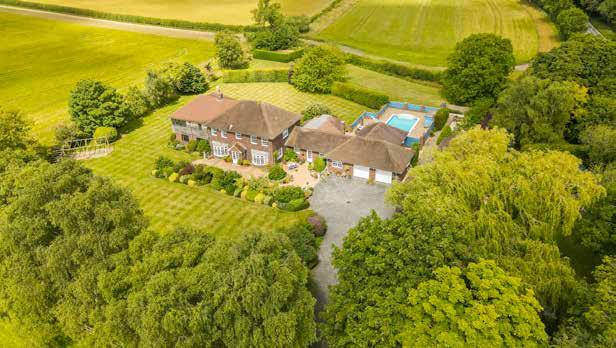


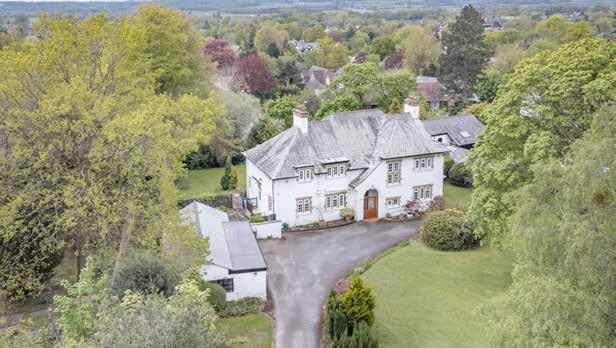
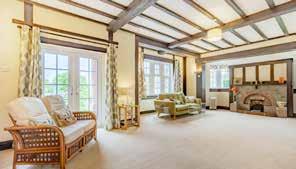
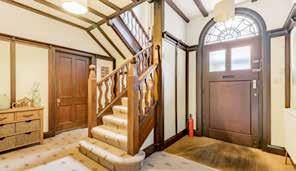



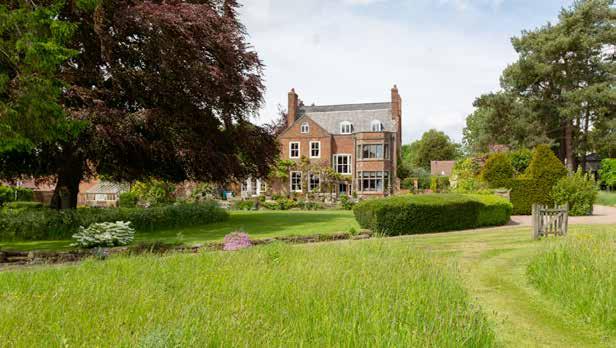
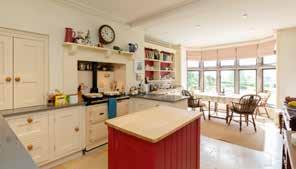



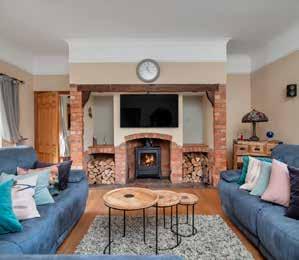


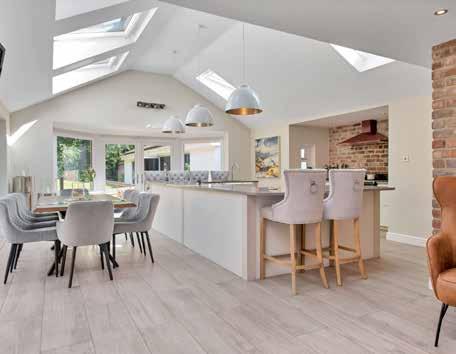


Historic homes and period properties have long captivated those looking to own a house that combines a rich provenance with enduring design. Many buyers actively search for exemplar properties that clearly express the architectural vernacular of a particular period; others are less specific about era but would love to be the next custodian of an historical architectural gem that encapsulates whatever period in which it was constructed.
We have had the pleasure of facilitating the sale of an extraordinary range of historical properties, and here we take a tour of some of the most popular historical architectural styles for house-hunters keen to have their own piece of design history.
TUDOR 1485 to 1603
Tudor houses remain some of the most striking period properties in Britain, with both grand and modest homes having enduring appeal.

Larger Tudor properties are characterised by an H or E shaped floorplan and symmetrical architecture, with ornate multi-paned windows and the distinctive four-centred arch. Decorative chimney stacks and large stone fireplaces are common, and the richness of design continued internally with floor to ceiling oak panelling, ornate plasterwork, wooden flooring and encaustic tiles.
The archetypal smaller Tudor property is timber framed and often painted a characteristic black and white. These smaller properties (especially in towns or cities in which space was a premium) were built on simpler square or rectangular floorplans. Cruck framed structures and thatched roofs were common, creating a highly desirable ‘chocolate-box cottage’ style sought after by many today.
1702 to 1714
This baroque style was developed in Queen Anne’s reign, where distinctive properties were typified by bilateral symmetry and a central triangular pediment, with attractive sash windows. Warm brick tones together with quoins and carvings added an ornate aesthetic to the façade without compromising the elegance of the property. Queen Anne houses were built to a smaller scale than the Georgian properties that followed and are enduringly popular period properties for homebuyers today.
Houses built by our Georgian ancestors are perhaps the most sought after. Highly influenced by Classical and Palladian architecture, these wonderfully elegant properties were constructed to carefully considered theories of proportion and ratio, and whatever their size are characterised by sophistication and symmetry. To understand a little more about Georgian construction ratios, you may wish to research The Golden Ratio which is often considered to be the ratio of beauty!
The typical Georgian country house was situated in impressive, landscaped grounds and often built wide and low to appear striking from a distance. Constructed of brick or stone, architectural focus was on the façade and rear of the property. Large windows were placed with a focus on balance and Corinthian, Ionic and Doric columns were often a feature of the impressive entrance porches of these
properties. Internally, such properties were incredibly ornate, with delicate plasterwork, elegant chimneypieces, plus intricate stonework and marble. Carefully proportioned windows and high ceilings created space and elegance.

However, it is not just the country houses of the era which have enduring appeal. Georgian town houses fulfilled the needs of rapidly expanding urban populations, and the terraces, squares, crescents, or circuses of architecturally cohesive symmetrical and stylish properties remain incredibly popular with house hunters today. These houses are slim and tall, with distinctive sash windows and an entrance situated on one side of the façade, often with a decorative fanlight within the doorcase. Many such homes are Listed to protect them in their original form and as such have survived with most attractive period features intact.

The proliferation of building in the Victorian era makes Victorian properties some of the most architecturally recognisable. However, this ubiquity hasn’t dampened the desire of buyers to find their own Victorian home, whether it be a classic Victorian terrace or a more grandly proportioned property.
The Victorian terrace property, with its bay windows and red brick construction, is instantly recognisable as being of the era. Despite not being the largest of properties, these homes tend to have high ceilings and bay sash windows, creating a light and airy feel.

Terracotta detailing to the exterior, leaded lights and stained glass, attractive tiled flooring and decorative cast iron fireplaces are some of the period features that make these homes so desirable. Grander Victorian properties, encompassing country houses and manor houses have similar recognisable design and architectural features. Perhaps the most easily recognisable style is the Gothic revival movement which came to prominence in the second half of the 18th century and was heavily influenced by medieval structures. Dramatic vertical emphasis is achieved by employing many elements from the era such as steep pitched roofs, pointed arches, finials and ornate details. Crenellations, towers and turrets were also popular motifs of the Gothic Revival style, making properties in this style a popular choice for those who favour property with a little bit of drama.
Although a brief period, Edwardian architecture can be seen as a refinement of classic Victorian architecture and its style is enduringly popular and influential. Often of red brick construction, Edwardian houses were characterised by steep pitched roofs with gable ends and decorative chimneys. Privacy was becoming an increasing concern at the time, and so many Edwardian homes were set back from the road with a front garden. Large windows and high ceilings were retained from previous eras, providing a bright and spacious interior.
Art Deco architecture gained popularity in the 1920s and 30s, and was typified by bold geometry and contrasting linear design with curved elements in a streamlined and clean style. Properties were often white rendered with distinctive Crittall windows creating a sleek look. Although not as prevalent as other period styles in Britain, the distinctive homes in this architectural style are perennially popular and their rarity only serves to increase their appeal.

Whatever your preferred style of historic home, this country has a rich heritage of stunning architecture, and we are delighted that we can play a small part in ensuring beautiful buildings are paired with buyers who truly appreciate them.

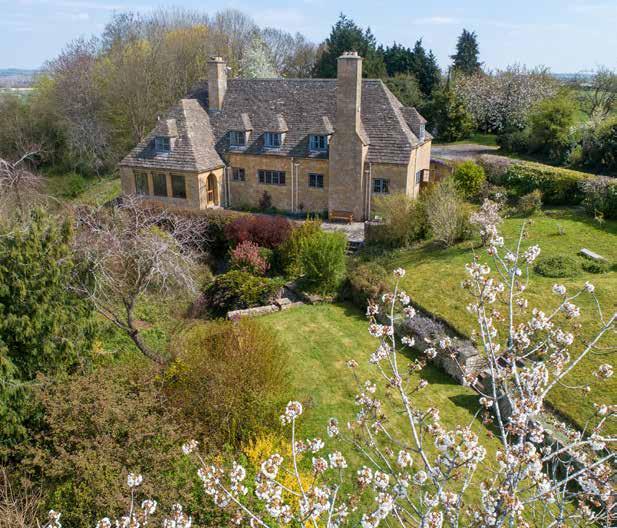

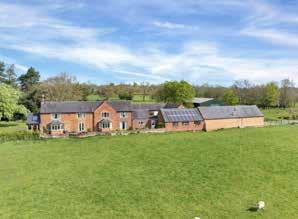

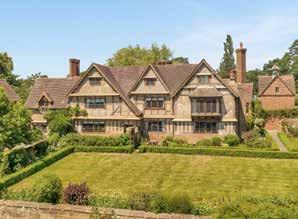





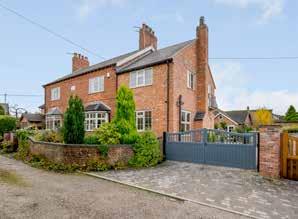


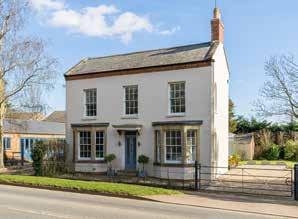
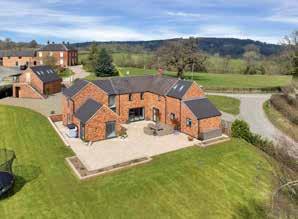


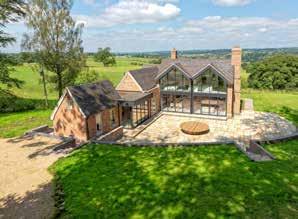



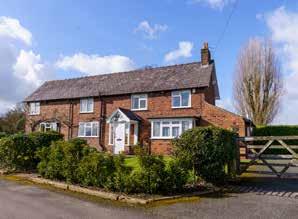






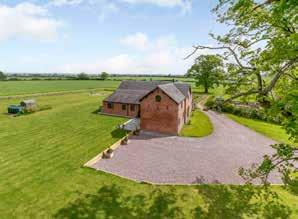
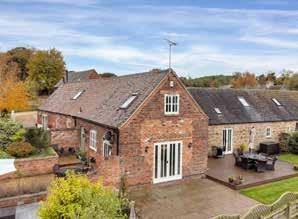
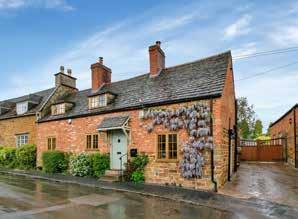

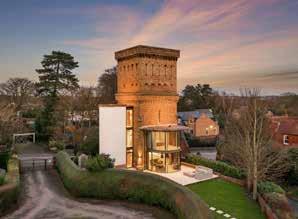

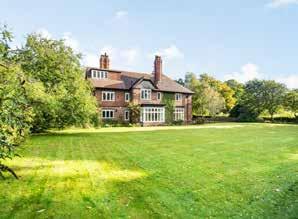










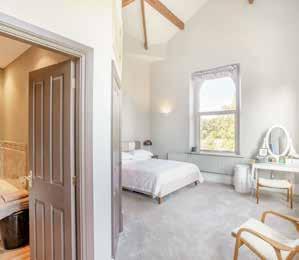
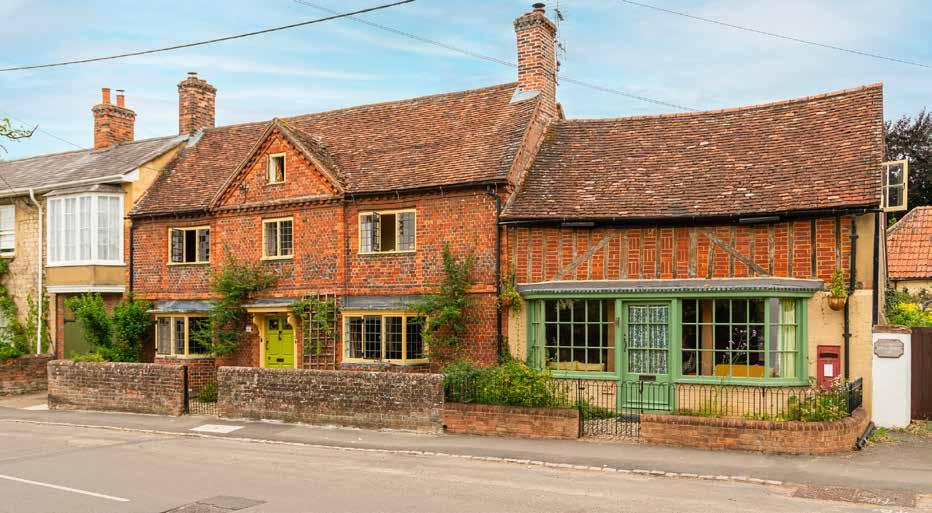


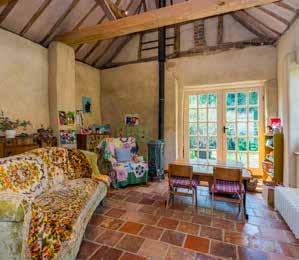

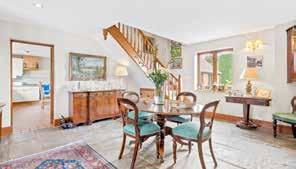

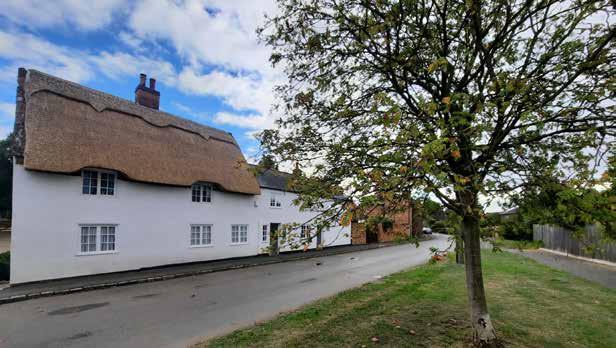


There are currently far more people who would like to move home than there are homes available for sale. This creates a dynamic market and one that requires careful planning if you are to move successfully and with a minimum amount of stress! This increased demand for homes means that developers are not only building at an increased rate to construct more new properties, but also, they are delivering a wider variety of architectural styles to appeal to virtually every purchaser. People who perhaps hadn’t considered a new home in the past are taking a much greater interest in them now. There are some benefits that a new home provides that not everyone will be aware of – so here is a little guide to the positives of focusing on new.
Energy efficiency is becoming more important to all of us for a variety of reasons. Whether it’s environmental considerations, financial considerations, or something else, there is general recognition that sustainability and efficiency are very important. New homes are ahead of the game when it comes to this, when comparing them to period properties.
Very simply, building regulations include a set of standards that developers must meet in order to make the properties that they build as energy efficient as possible.
This increased energy efficiency means that energy bills will be lower than they are for older properties. In England, current energy bills for an existing property typically cost an estimated £797 per year, whilst for a new-build property it’s about 50% less at a typical cost of £390.
This differential will increase further, as new homes must comply with the latest building regulations and from June 2022 CO2 emissions from new-build homes must be around 30% lower than current standards. This means that installing low carbon technology, such as solar panels and
heat pumps, and using materials in a more energy efficient way to retain heat are becoming common. These moves will not only help cut emissions but will also save you money on your energy bills.
Certificates shows over 80% of new homes have the highest A or B ratings. That compares to just 2.2% of existing properties. With better EPC ratings, new-build homes open up the option of green mortgages which typically offer cheaper rates.
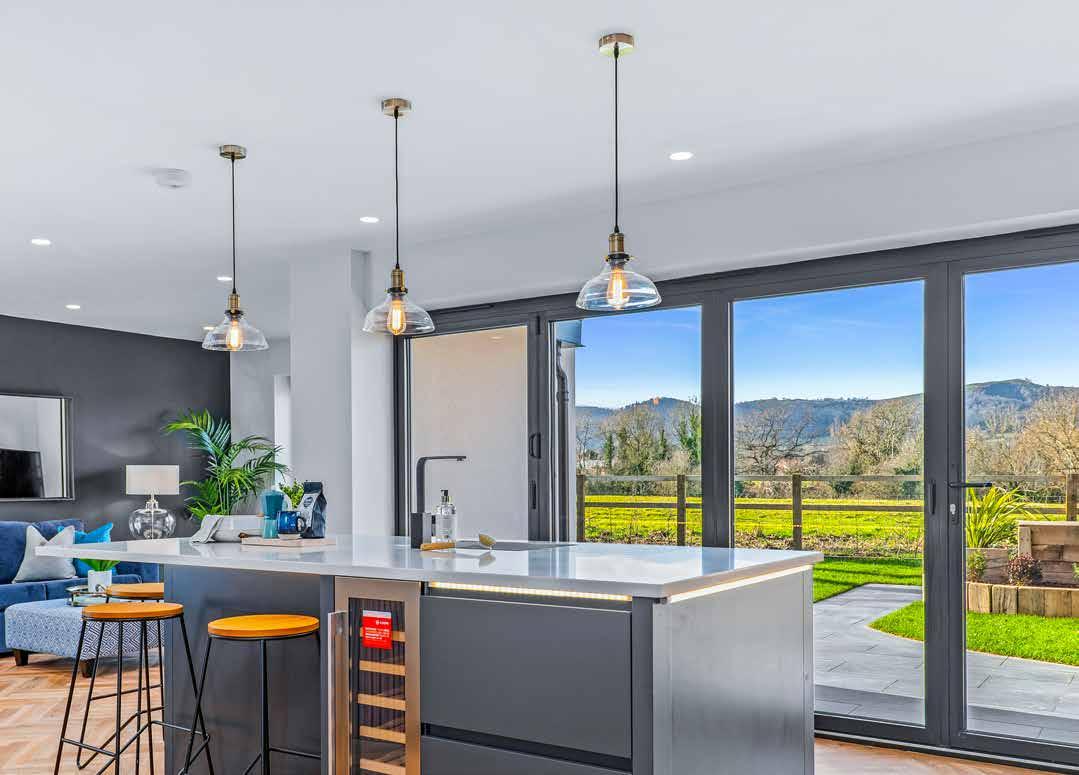
In line with building regulations, new-build homes typically offer the latest safety features such as multi point locks on doors and windows, security lighting, alarms, fire safety and in some cases gated entrances. These types of measures can help to bring down the cost of your buildings and contents insurance whilst also giving you peace of mind. Technology is not simply the preserve of safety features. New-build homes often offer ‘smart home’ features for audio-visual technology, lighting and heating to name but a few.
Perhaps you’re a competent DIY enthusiast with time to enjoy renovating a property, or perhaps you’re one of the few who can secure tradesmen easily, but for many people there is a significant advantage to buying a property that isn’t going to require significant maintenance. With new builds there is often the option to choose fittings, fixtures and perhaps even tweak the layout to meet your individual needs, so that you can really tailor your home to the style that you want. This means you should simply be able to unpack your belongings on movein day and start enjoying your new home!
It’s also worth knowing that many newly constructed homes come with a 10-year build warranty covering structural defects and developers often include additional warranties for your peace of mind.
The transaction process itself is often less hassle with a new build. If you have moved home in recent memory, you may remember that one of the key challenges is balancing your needs with the needs of the person you are selling to or buying from. If a new home is a consideration for you then buying from a developer takes out a large element of uncertainty. You will be buying a property from a business rather than another private individual, which certainly simplifies the nature of the transaction.
One of the well-known challenges of moving house is trying to get a group of people coordinated to all move house on the same day – the so-called property chain. A new home is inevitably the end of the chain, again simplifying the nature of the transaction. Some property developers are set up to buy your home, taking


it as a part exchange against the new property – again paving the way to a stress-free move.
New builds often get a bad press with stories of poor quality making the headlines. Even with the best new-build home, you can still expect snags like doors getting stuck on new carpets or a loose tile. The good news is you will get plenty of time to inspect your property and in most cases, issues are rectified within 28 days. In reality, people opting to buy an older property will have a similar list of minor issues to tackle. In addition to this, old homes will usually require more maintenance and renovation in comparison to newly built homes, due to their ageing features and utilities.
If you are one of the first people to move on to a new development you may be living beside houses that are under construction which can impact your enjoyment of your home for a few months. Unfortunately this is unavoidable, but it won’t be long before you see new neighbours move in and the community develop around you.
An advantage of buying a new build is you may have the opportunity to buy ‘off-plan’ which means buying it before it is even built. This might sound risky, but if you’re buying in a market where property prices are on the up and more homes are needed, it can have its rewards!
Many prospective buyers prefer a property to have its own identity and features, as opposed to the blank canvas of a newly built home. If you’re more a fan of period property, take a look at our article on page 21.

The new Help to Buy scheme launched on 1 April 2021. The scheme is for first-time buyers and includes regional property price limits to ensure the scheme reaches people who need it most. The new scheme will run until March 2023. As with the previous scheme, the government will lend homebuyers up to 20% of the cost of a newly built home, and up to 40% in London.
This scheme enables you to buy a share of a new home from the ‘landlord’, who is typically the council or a housing association, and pay rent on the remaining share. You need a mortgage to pay for your share, which can be between a quarter and three-quarters of the home’s full value. You then pay a reduced rent on the share you don’t own. Later, you can choose to buy a bigger share in the property, and ‘staircase’ up to 100% of its value.
Assisted move schemes are offered by new house builders or developers. They are intended for those who want to buy a new-build house from them but have an existing house they need to sell first.
The part exchange scheme is where you trade the value of your existing house against a new-build property. Ultimately, your property serves as part payment for a new-build house and this way of selling will help you avoid having to repair a property chain and means you will own a brand-new home. One of the reasons some sellers like part exchange is that the sale of their property is more guaranteed and avoids lengthy and complex chains, meaning a part exchange house scheme could be just the answer for you.
Alvington,
A distinct collection of 4 and 5 bedroom inspiring new homes located in the picturesque village of Alvington.
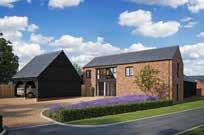


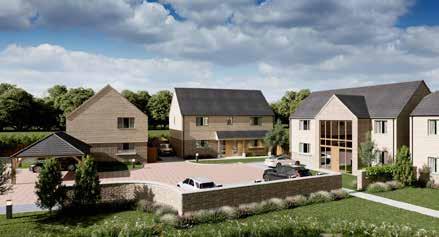
Worcester 01905 726220
Knaptoft, Leicestershire St Peters Court Developments
Situated in the hamlet of Knaptoft, Meadow View will provide eight new barn style properties centered around a courtyard, three new cottages and two substantial new houses with historical features (including a listed annexe), each boasting spectacular views.
Market Harborough
410200
£
Harpole, Northampton Browns Developments Ltd
A captivating former public house which lies in the heart of the sought-after village of Harpole. The property has been completely restored to an extremely high standard creating a serene and homely environment.

Banbury 01295 271555
Chester, Cheshire Pure Residential & Commercial Ltd
An exclusive development of twenty 4, 5 and 6 bedroom new homes which each boast a number of energy efficient features, along with a separate homeworking unit with mezzanine level, ideal for those that want a short commute to work.

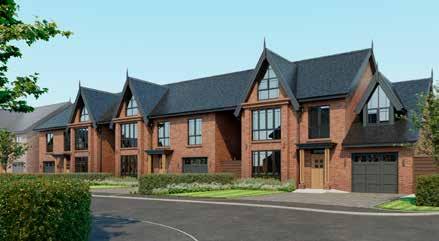

Chester 01244 409660
Much Cowarne, Herefordshire
Mark James Complete Building Services
A small but perfectly positioned collection of carefully crafted homes in the rural idyll of Much Cowarne in Herefordshire. Worcester 01905 726220
Frisby-on-the-Wreake, Leicestershire Bowbridge Homes
A stylish collection of attractive 2, 3, 4 and 5 bedroom new homes set in Leicestershire’s rolling countryside.
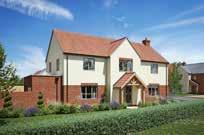


Market Harborough 01858 410200

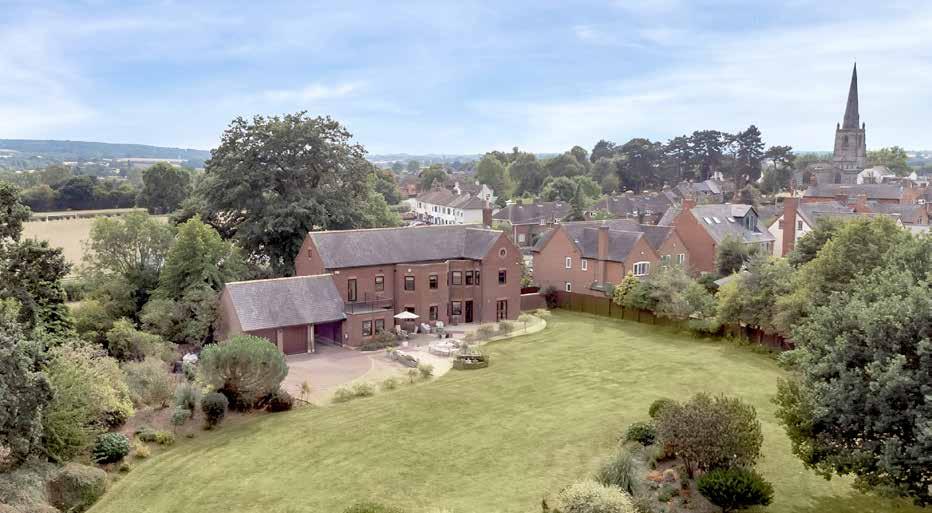
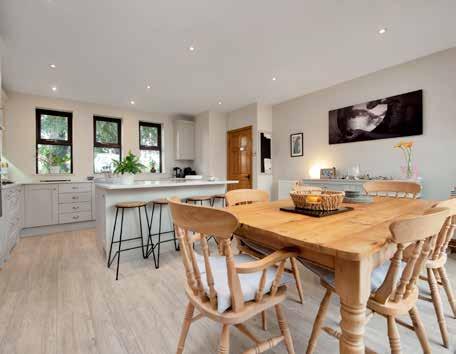
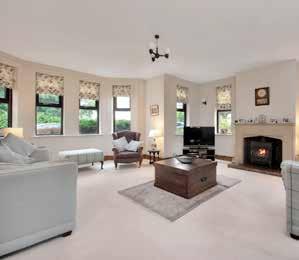
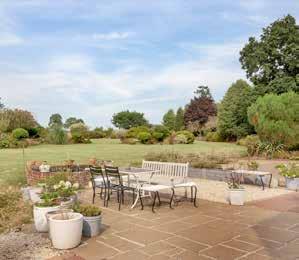


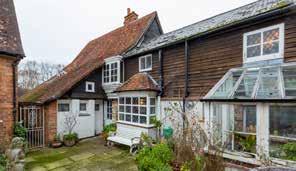

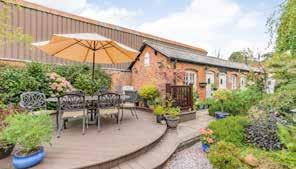
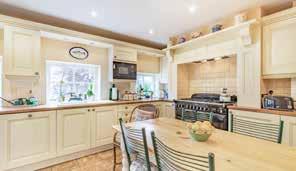





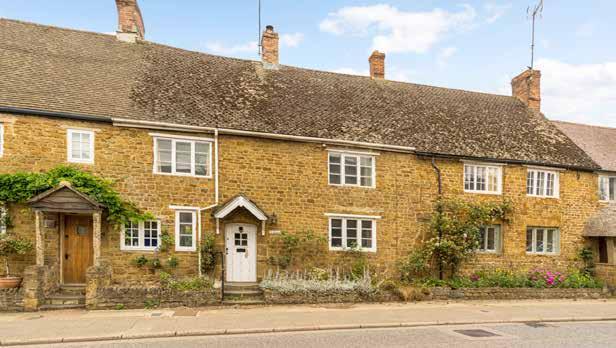
potential



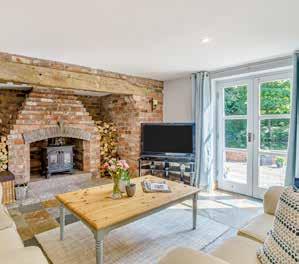
The ‘race for space’ – the prevalent desire to move away from cities and into the countryside – has seen homebuyers re-evaluating not only where they might like to live but also the specific kinds of homes that they want. The yearning for more space goes beyond simple location; buyers are increasingly searching for more spacious homes and larger gardens, possibly even with a little land.
Changed working practices means that one of the most common space requirements is a property with room for a dedicated home office or even two. This may not always be practicable, so in smaller properties people are looking for areas that offer clever use of space to create an office nook in an underused area. This could be a corner or alcove of a room, a hallway or a landing, or other neglected space.


In a larger property, a small spare room obviously works well utilised as a home office, but there are other options to consider too. If a spare room is not available, but the solitude of having an office behind closed doors is important, garage and loft conversions are good options to look for. Planning permission is not usually required as long as the work is internal and does not relate to a Listed building
where additional consents may be required. Many people are surprised to learn that there is also usually no planning permission required when adding a small extension to the rear or side of a house, as such modifications are acceptable through government ‘permitted development rights’, although it is essential to take advice from a planning expert before undertaking any changes to your home.
Although office space remains important, people are also looking to reclaim some balance in their homes, and to make hybrid working work with hybrid interior spaces that really function for family life in 2022. Open-plan living is highly desirable for many house hunters, and never more so than in the kitchen. A modern family kitchen is so much more than just a functional room. It’s a place to socialise, entertain and work, and often needs to be flexible enough to be the perfect location for an informal dinner party, family meals, a place for children to play or do homework, and an area to relax. As the kitchen now occupies such an important role in our lives, it has become one of the most influential rooms in a property sale. A kitchen that matches the aspirations of the majority of the buying population is a huge step towards a successful sale.
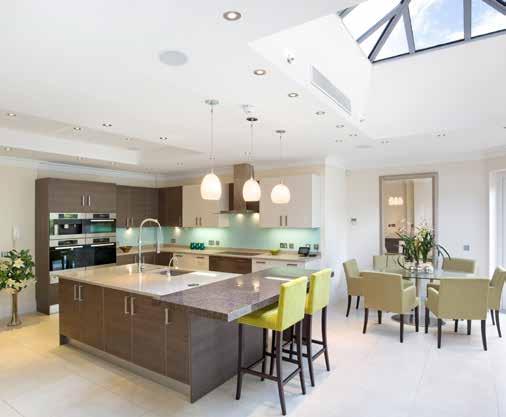
The biophilia trend expands beyond natural materials to the desire to bring nature itself indoors. Perhaps as a result of the pandemic and lockdowns, people have realised the benefits of being surrounded by nature and are increasingly focused on creating a seamless flow between inside and out. People are on the look-out for homes with transitional spaces such as orangeries, sunrooms and conservatories; anything that can create a continuation of the interior space whist making the most of garden views and providing useful additional dining spaces or family rooms. If such an additional structure is not possible, considered use of glass panelling, large windows or bi-fold doors can unite inside and outside spaces.
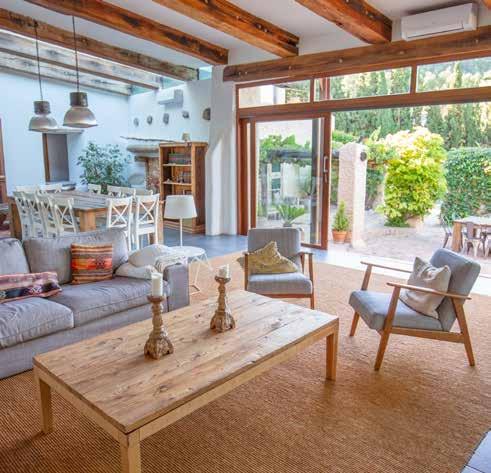

People are becoming more aware of sustainability and the environmental impact of their actions. When it comes to property, this is not just apparent in the way that we build and heat our homes (you can read more about that on page 8) but also in the choices we make for their interiors. Biophilia may seem to be another zeitgeisty term made for a social media hashtag, but the desire for connection to nature can be seen as more than a passing fad. People are increasingly keen to utilise natural, responsibly resourced materials and furnish their house with products that offer longevity, increasingly eschewing ‘fast fashion’ and synthetic homewares due to their negative environmental impact.
The garden itself has taken on more importance in recent years too; people are now considering gardens as very much part of the living area of a home. Alfresco dining and entertaining were saviours for many during the pandemic, and show no sign of falling out of favour. Purchasers are looking for homes with space for cooking outside, with grills, pizza ovens and even fully fitted
outdoor kitchens. Dining spaces do not necessarily need to be restricted to a patio area, and separate pergolas, verandas or other specially designed areas are being used to create additional garden ‘rooms’ which are slightly separate from the home and offer a more immersive experience of outside living and crucially, the all-important space that people are craving.

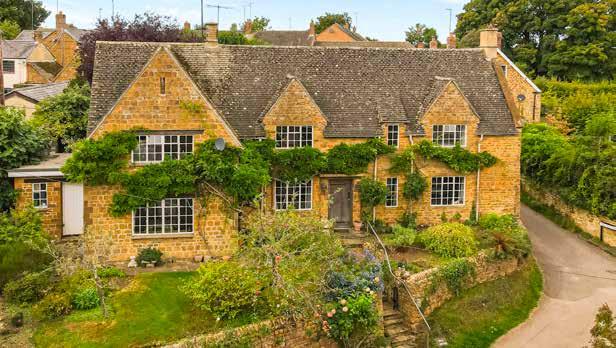




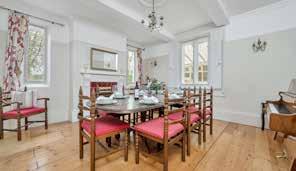
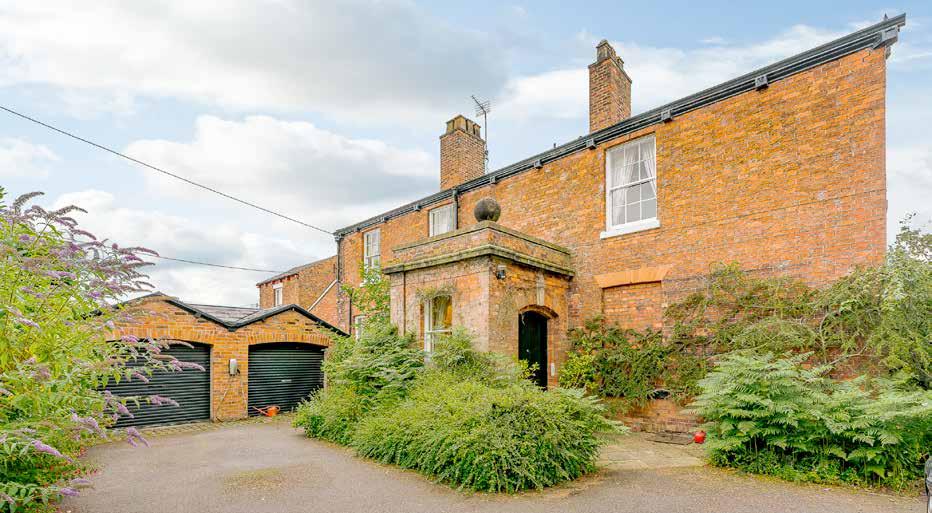

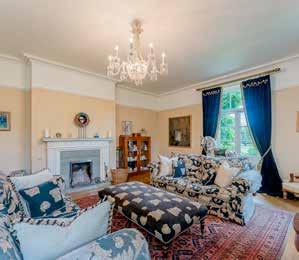

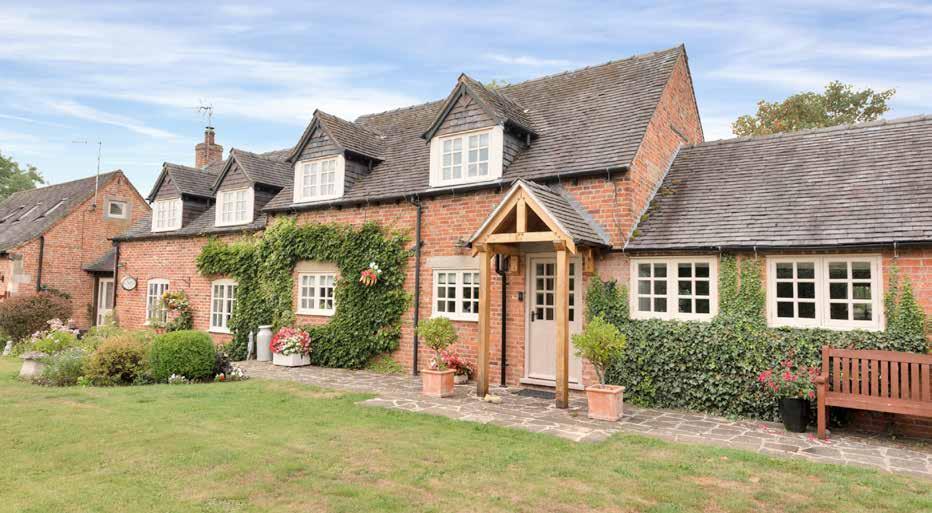


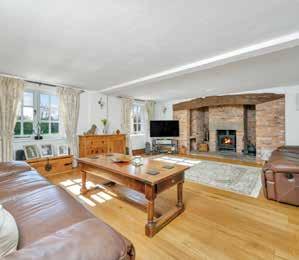
Stamp Duty Land Tax (SDLT) is payable to HMRC when buying property or land over a certain value. SDLT is payable to HMRC in the UK with the exception of Scotland where they have their own Land and Buildings Transaction Tax (LBTT) and Wales have Land Transaction Tax (LTT).
Stamp Duty Land Tax is levied progressively, in a similar way to income tax. Calculating your liability to this progressive tax can be complex. It can depend on the type of property you are buying, and whether it is your principal private home, a second or third home or a commercial or mixed-use property. Below we break down what Stamp Duty you would be charged depending on a variety of factors.
If you are purchasing a residential property, are not a first-time buyer, are a UK resident and this will be the only property you will own and (whether you live in it or not), then you will pay Stamp Duty if the transaction price is above £250,000. Thereafter, you pay tax as follows:
• The next £675,000 (the portion from £250,001 to £925,000) – 5%
• The next £575,000 (the portion from £925,001 to £1.5 million) – 10%
• The remaining amount (the portion above £1.5 million) – 12%
There is a discount for first-time buyers. A first purchase of up to £425,000 no longer attracts the tax, and the existing rate of 5% applies on the portion from £425,001 to £625,000. The relief does not apply to properties above £625,000.
Anyone purchasing a second home or buy-to-let property above £40,000 (unless this is the only property you own) will have to pay an additional 3% on top of the amounts detailed on the left.
If you are purchasing a new property which you intend to use as your only home, but haven’t yet sold your previous house, you would have to pay the higher rates detailed on the left – however, if you sell your old house within 36 months you could get a refund.
Purchasing a property with significant land holdings can attract a different stamp duty calculation. If the property is classified as nonresidential or mixed-use land and property there is a stepped regime as follows:
• Up to £150,000 – 0%
• Above £150,000 and up to £250,000 – 2%

• Above £250,000 – 5%
Our agency teams are highly knowledgeable and are often asked to provide advice about SDLT so please do get in touch with any questions you may have. To make life a little easier, our website has an online Stamp Duty calculator to cut through the often confusing world of SDLT and save you time – you can find it here:

over
national firm

of
planners,
and we work out of 25 offices
for a broad range of clients in six main







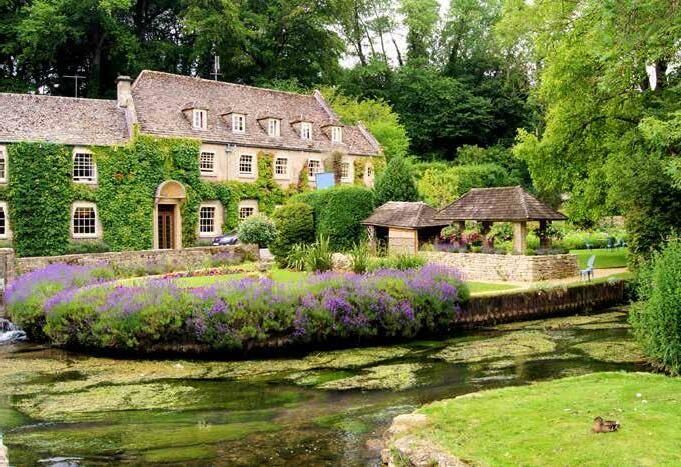



heads of each sector
listed on this page together with
Fisher German has an extensive network offering exceptional national coverage. If you are looking to buy or sell residential or agricultural property we will be delighted to help you.
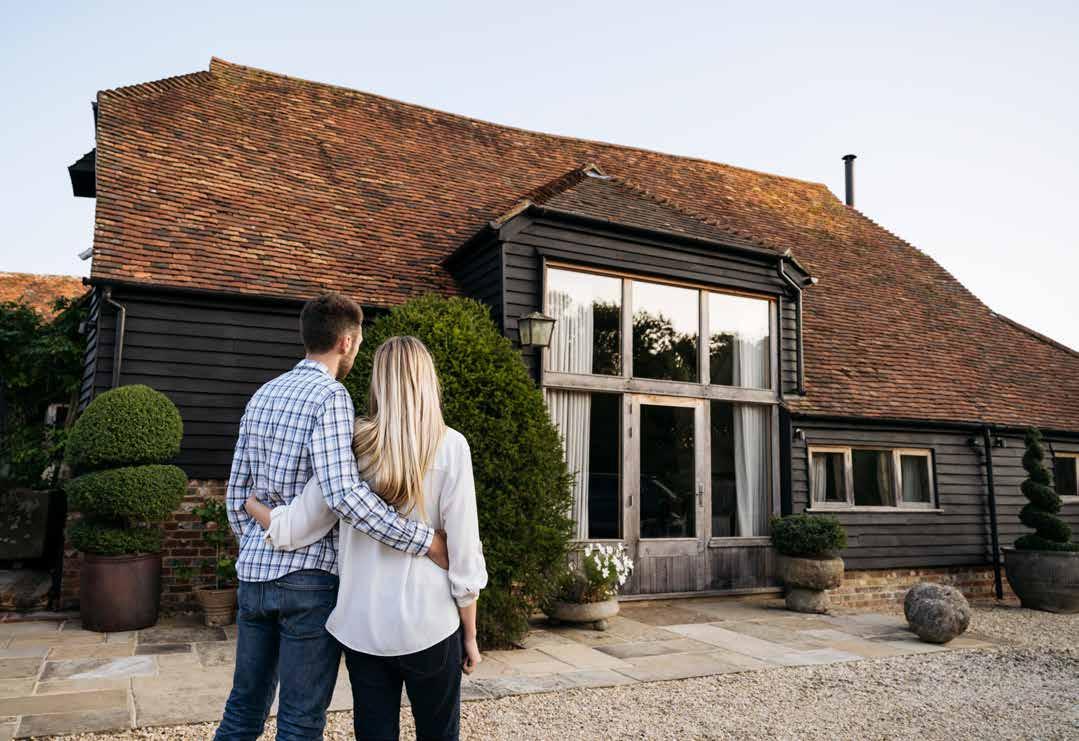
Please call us on any of the local office numbers on page 5 or email: property@fishergerman.co.uk if you would like a free market appraisal or if you would like us to help you with your property search.
Source magazine is intended to be informative but further advice should be taken before decisions are finalised. Prices are correct at time of launch. Fisher German LLP has tried to ensure accuracy and cannot accept liability for any errors, fact or opinion. Date of production March 2022, this edition updated October 2022